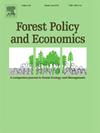在意大利,使用生活满意度方法对森林和绿色空间访问的健康和福祉效益进行经济评估
IF 3.8
2区 农林科学
Q1 ECONOMICS
引用次数: 0
摘要
尽管越来越多的人关注并有越来越多的证据表明,花时间在森林和绿色空间(GS)对健康有益,但很少有研究试图对这些好处进行经济价值评估。生活满意度方法代表了一种很有前途的非市场评估方法,可以全面捕捉这种环境的健康和福祉效益。采用来自意大利1400名受访者的代表性样本的原始数据,我们从生活满意度方法和完善的条件评估方法中提出价值估计。我们发现,在过去一年中至少参观一次森林和GS与更高的生活满意度相关。使用收入和森林/GS参观之间的边际替代率,我们的结果表明,年收入增加11,171欧元将增加与过去一年参观森林/GS相同的生活满意度。该值由使用或有估价法的同一样本的陈述支付意愿(WTP)估计值补充。每次森林/GS访问的WTP估计为18欧元,年总价值是根据访问频率计算的。两种方法的结果相互补充,提供了经验效用和决策效用的估计,为政策和决策者提供了更全面的信息。这两种方法都表明,森林和绿地是健康和福祉的重要贡献者,具有重要的经济价值。这是第一篇使用生活满意度方法来评估意大利森林和GS访问的好处的论文,对文献做出了重要贡献。本文章由计算机程序翻译,如有差异,请以英文原文为准。
Using the life satisfaction approach to economically value the health and wellbeing benefits of forest and green space visits in Italy
Despite increasing attention and growing evidence of the health benefits of spending time in forests and green spaces (GS), very few studies have attempted to place an economic value on these benefits. The life satisfaction approach represents a promising method of non-market valuation that could capture holistically the health and wellbeing benefits of such environments. Employing primary data from a representative sample of 1400 respondents in Italy, we present value estimates from the life satisfaction approach and the well-established contingent valuation method. We find that visiting forests and GS at least once in the past year is associated with higher life satisfaction. Using the marginal rate of substitution between income and forest/GS visits, our results indicate that an additional €11,171 in annual income would increase life satisfaction by the same amount as visiting forests/GS in the past year. This value is complemented by estimates of stated willingness to pay (WTP) from the same sample using the contingent valuation method. WTP per forest/GS visit is estimated as €18 and aggregate annual values are calculated based on visit frequency. Results from both methods complement each other, providing estimates of both experienced and decision utility, offering more comprehensive information to policy and decision makers. Both methods indicate that forests and green spaces are important contributors to health and wellbeing, associated with significant economic values. This is the first paper to use the life satisfaction approach to value the benefits of forest and GS visits in Italy, making an important contribution to the literature.
求助全文
通过发布文献求助,成功后即可免费获取论文全文。
去求助
来源期刊

Forest Policy and Economics
农林科学-林学
CiteScore
9.00
自引率
7.50%
发文量
148
审稿时长
21.9 weeks
期刊介绍:
Forest Policy and Economics is a leading scientific journal that publishes peer-reviewed policy and economics research relating to forests, forested landscapes, forest-related industries, and other forest-relevant land uses. It also welcomes contributions from other social sciences and humanities perspectives that make clear theoretical, conceptual and methodological contributions to the existing state-of-the-art literature on forests and related land use systems. These disciplines include, but are not limited to, sociology, anthropology, human geography, history, jurisprudence, planning, development studies, and psychology research on forests. Forest Policy and Economics is global in scope and publishes multiple article types of high scientific standard. Acceptance for publication is subject to a double-blind peer-review process.
 求助内容:
求助内容: 应助结果提醒方式:
应助结果提醒方式:


